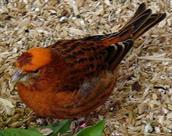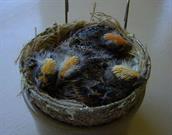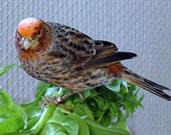LIZARD CANARY SOCIETY OF N.Z.


The wild canary was first introduced into Europe towards the end of the fifteenth century. They soon became domesticated and, by selective breeding and the occasional mutation, developed into many different breeds, most of which bear little resemblance, either in form or colour, to their ancestors.
The oldest of these varieties the Lizard Canary, was first shown in London in the 1790's.
Unlike most varieties of Canary that are bred for shape or colour, the Lizard is prized for the pattern of its spangling, which comprises the markings on the birds' back,
In their perfect form the black crescent shaped spots that form the spangles, are separate and distinct from one another in straight parallel rows down the bird`s back, each succeeding spangle being progressively larger, than the one nearer the neck.
It was the fanciful resemblance of Spangling to the scales of the reptile that gave the Lizard its name.
The terms, gold and silver, are always used for Lizards in preference to yellow and buff.
As 2nd year birds, Lizards lose the blackness of their wing and tail flights and, to an extent the crispness of their spangling. They are at a slight disadvantage on the show bench, with many excellent specimens benched.
CONTACT; The Secretary
Mrs. Barbara Birch
5 Cooksey Place
NAPIER 4112
Ph./Fax 06 8436260 Email dbbirch@nowmail.co.nz
FORMED FOR THE PURPOSE OF ENCOURAGING THE BREEDING AND EXHIBITING OF THE LIZARD CANARY.
Founded June 1974
GOLD LIZARD NEST OF 4 CHICKS SILVER LIZARD










